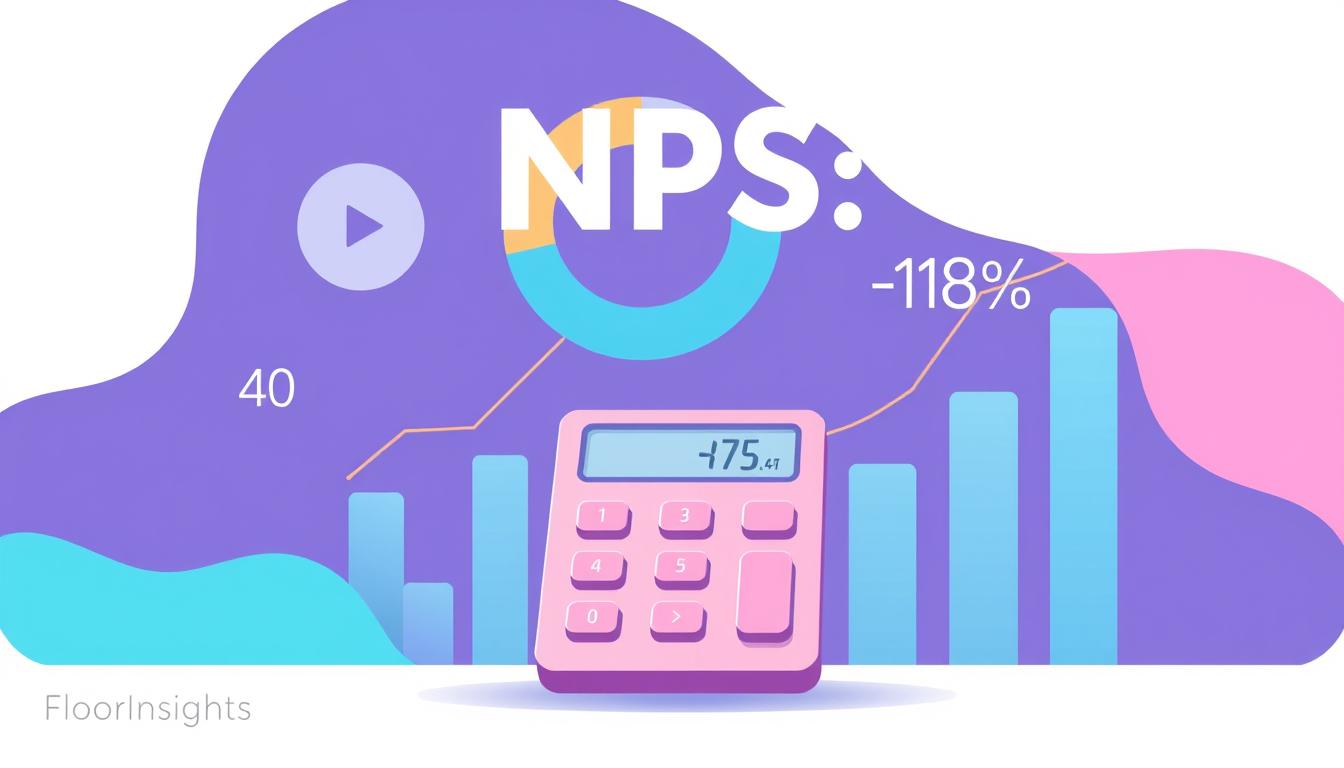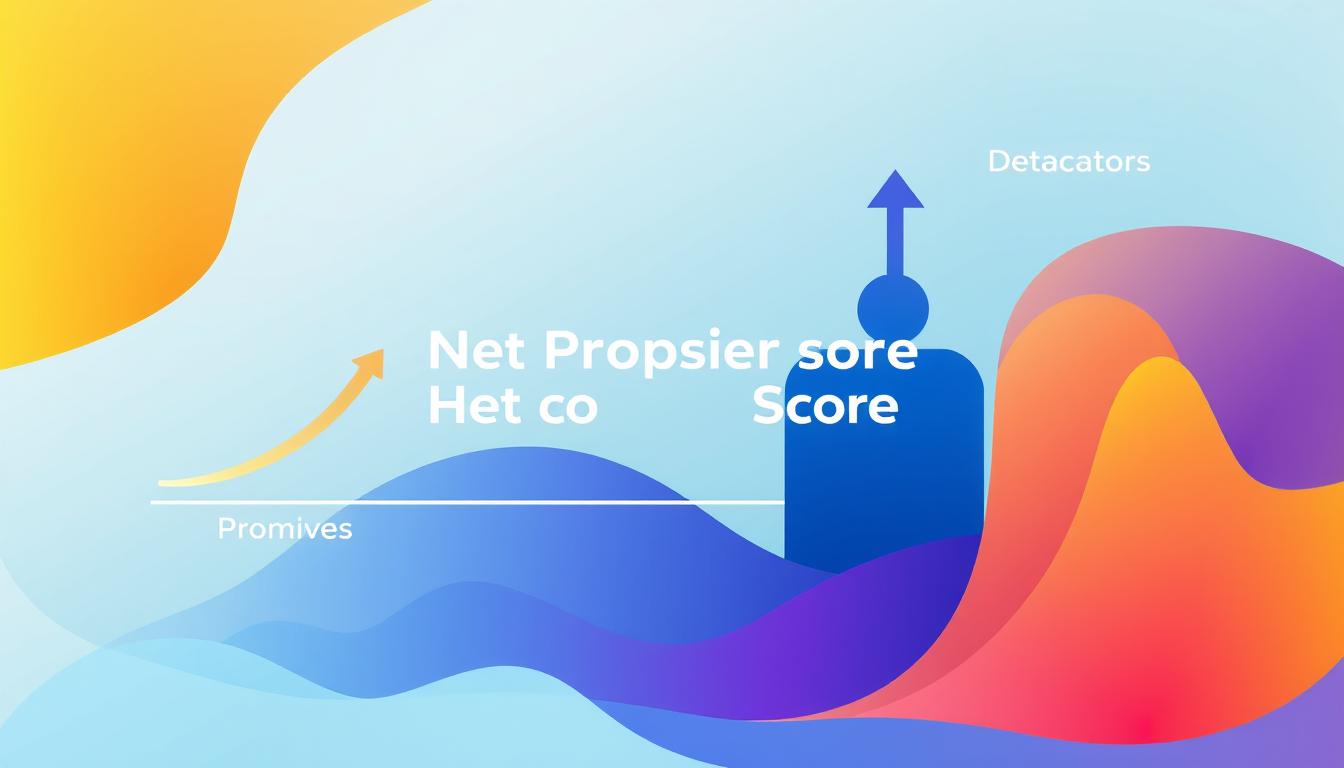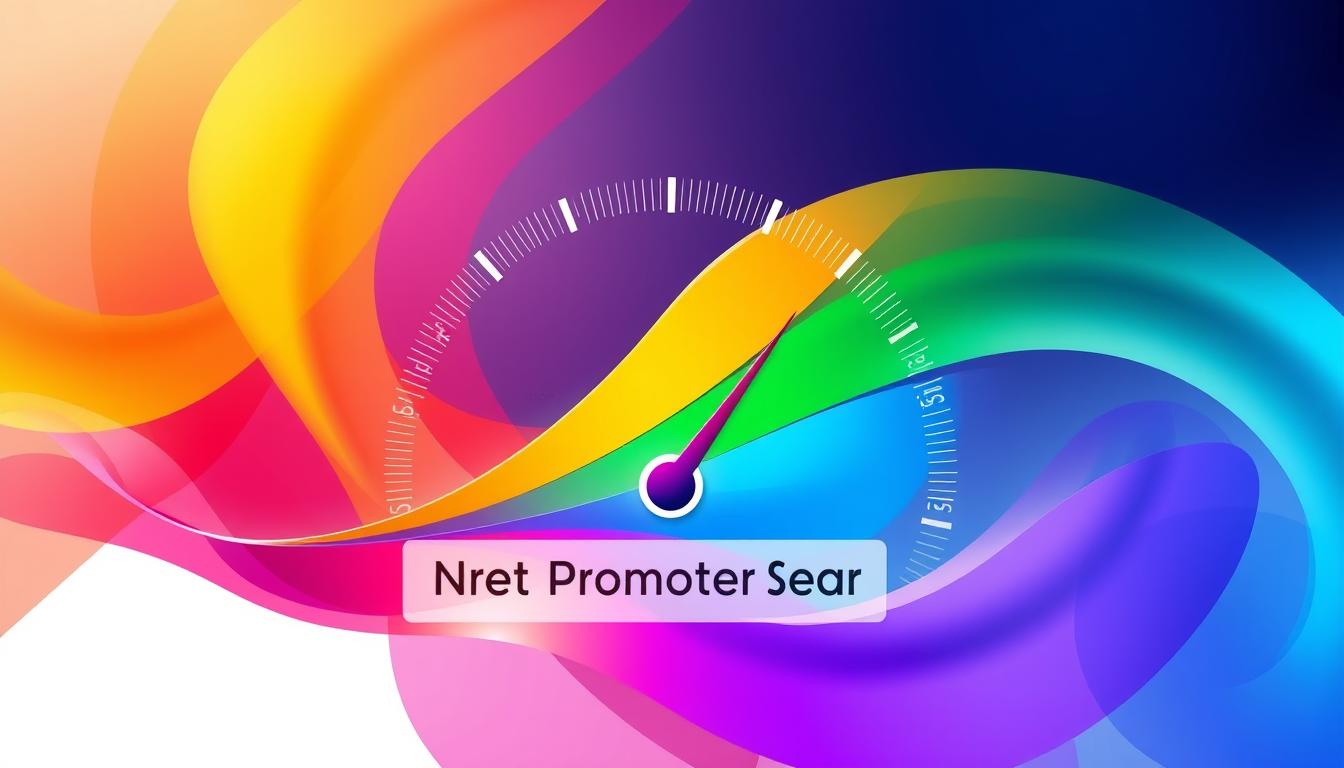Amazon’s quest for exceptional customer satisfaction and loyalty has cemented its place as a global e-commerce titan. Central to this success is its adept use of the Net Promoter Score (NPS). This metric not only measures customer satisfaction but also plays a pivotal role in Amazon’s overall business strategy. By analyzing Amazon’s NPS strategy, other companies can uncover valuable insights into enhancing their customer experiences and driving genuine loyalty.
Amazon’s commitment to customer-centricity is embedded deeply in its business philosophy. The company employs NPS surveys to garner actionable feedback, identify pain points, and implement improvements swiftly. As a result, Amazon consistently ranks high in customer satisfaction metrics and retains a robust and loyal customer base.
Key Takeaways
- Understand Amazon’s strategic use of NPS to improve customer satisfaction and loyalty.
- Learn how integrating NPS into a business strategy can lead to enhanced customer experiences.
- Recognize the importance of customer feedback in refining products and services.
- Discover Amazon’s methods for collecting and analyzing NPS survey data.
- Gain insights into creating a customer-centric business model through NPS tactics.
- Explore practical applications of Amazon’s NPS strategies for other companies.
Understanding Amazon’s Net Promoter Score Approach
Amazon has consistently excelled in achieving high customer satisfaction, and a key metric that aids this accomplishment is the Net Promoter Score (NPS). To understand how Amazon leverages this metric, we need to delve into the basics, the specific reasons Amazon prioritizes NPS, and the methodologies they employ in conducting NPS surveys.
The Basics of Net Promoter Score
Net Promoter Score is a critical tool used across industries to gauge customer loyalty. The score is derived from asking a simple question – “How likely are you to recommend our company/product/service to a friend or colleague?” This metric allows companies to categorize respondents into Promoters, Passives, and Detractors, offering a comprehensive view of customer satisfaction through survey feedback.
With NPS Calculation, companies like Amazon can benchmark their performance against competitors and understand the market pulse. By consistently analyzing this data, Amazon stays ahead in customer satisfaction.
Why Amazon Focuses on NPS
Amazon’s commitment to NPS stems from its overarching goal to offer the best customer experience. By focusing on NPS, Amazon can:
- Identify areas of improvement through detailed survey feedback.
- Reduce customer churn by addressing issues brought up by Detractors.
- Foster loyalty by turning Passives into Promoters.
This emphasis ensures that Amazon continually aligns its services according to customer preferences, driving overall growth and customer satisfaction.
Amazon’s NPS Survey Techniques
Amazon employs a series of well-strategized methods to conduct its NPS surveys. They utilize:
- Regular, consistent surveying: This allows them to capture the most relevant and current feedback.
- Detailed response analysis: Diving deep into survey feedback helps identify patterns and actionable insights.
- Multiple touchpoints: Surveys across various channels ensure a diverse and comprehensive data set for accurate NPS Calculation.
Through these techniques, Amazon gathers invaluable insights, maintaining their status as a customer-centric enterprise.
The Role of Customer Feedback in Amazon’s Strategy
Amazon places immense value on Customer Feedback as a crucial component of its overall strategy. This continuous loop of feedback provides the necessary insights to enhance the Customer Experience and boost the Net Promoter Score (NPS). By meticulously collecting and analyzing feedback, Amazon ensures it stays attuned to customer needs and preferences.
Collecting Customer Feedback Effectively
Amazon employs various methodologies to gather Customer Feedback efficiently. Utilizing surveys, focus groups, and real-time feedback mechanisms across their digital platforms enables Amazon to receive a diverse range of insights. These methods include:
- Online surveys post-purchase
- Ratings and reviews on product pages
- Automated emails requesting feedback
Analyzing Customer Feedback Data
Once Customer Feedback is collected, Amazon employs advanced analytics to decode this data. The company leverages machine learning algorithms to identify patterns and trends, which helps in making data-driven decisions. The analysis focuses on:
- Segmenting feedback into actionable categories
- Understanding sentiment and identifying pain points
- Monitoring changes in Customer Experience over time
This comprehensive approach ensures that feedback insights directly contribute to Amazon’s service improvements, thereby maintaining a high NPS and superior Customer Experience.
How Amazon Measures Customer Satisfaction
Amazon’s commitment to delivering exceptional customer experiences is reflected in its comprehensive approach to customer satisfaction. While Net Promoter Score (NPS) is a cornerstone metric, Amazon employs a variety of other Customer Satisfaction Metrics to ensure a holistic understanding of their customer base.
Key Metrics Beyond NPS
In addition to NPS, Amazon carefully analyzes several other metrics designed to provide a full picture of how customers perceive their service. By examining these different Customer Satisfaction Metrics, Amazon ensures that it covers every aspect of the customer journey.
- Customer Effort Score (CES) – This metric helps Amazon understand how much effort customers must exert to get their issues resolved.
- Customer Satisfaction (CSAT) – Through surveys, Amazon gathers direct feedback on specific interactions, allowing for targeted improvements.
- First Contact Resolution (FCR) – This measures the effectiveness of Amazon’s customer service in resolving issues during the first interaction.
Moreover, Amazon’s Loyalty Measurement takes into account both purchasing frequency and customer advocacy, providing a dual perspective on loyalty. These metrics, alongside NPS, create a robust framework for Amazon to analyze and enhance their customer relationships continuously.
| Metric | Purpose | Measurement Frequency |
|---|---|---|
| NPS | Gauge customer loyalty and potential brand ambassadors | Quarterly |
| CES | Evaluate the effort required by customers to resolve issues | After service interactions |
| CSAT | Direct customer feedback on specific transactions | Ongoing |
| FCR | Measure the efficiency of resolving customer issues on first contact | Monthly |
By effectively leveraging these Customer Satisfaction Metrics and Loyalty Measurement strategies, Amazon stays consistently aligned with its customers’ needs, ensuring a superior shopping experience and sustained business growth.
Driving Customer Loyalty Through NPS
As we delve into Amazon’s strategies for driving Customer Loyalty through their refined NPS approach, we uncover a multitude of tactics aimed at converting satisfied customers into enthusiastic promoters. Amazon’s commitment to understanding their customer base and leveraging NPS feedback has played a pivotal role in nurturing long-term relationships. This strategic focus has culminated in successful campaigns designed to enhance NPS scores and foster enduring customer engagement.

Amazon’s ability to create loyal promoters stems from a deep understanding of consumer behavior and targeted marketing strategies. By continually collecting and analyzing NPS feedback, Amazon identifies the key drivers of Customer Loyalty and implements personalized interventions to address customer needs. This proactive approach not only mitigates potential dissatisfaction but also transforms neutral customers into avid brand advocates.
Creating Loyal Promoters for Your Brand
To translate these strategies for your own brand, consider the following:
- Understand Your Customers: Regularly gather NPS feedback and delve into the reasons behind customers’ ratings.
- Personalized Engagement: Use the insights gained to tailor your communication and offers, demonstrating that you value their feedback and are committed to enhancing their experience.
- Reward Loyalty: Implement loyalty programs that reward customers for their continued patronage, reinforcing positive feelings towards your brand.
Through consistent efforts to understand and engage, businesses can emulate Amazon’s successful NPS Strategy and cultivate a loyal customer base that not only returns frequently but also actively promotes the brand to others.
Transforming Detractors into Promoters
One of the biggest challenges in improving NPS is transforming detractors into promoters. Amazon’s approach is a blend of meticulous identification of the causes of detractors and the strategic implementation of solutions. By understanding the underlying issues and addressing them effectively, Amazon not only improves customer retention but also fosters brand loyalty.
Identifying the Causes of Detractors
A critical step in managing detractors is identifying the root causes of their dissatisfaction. Amazon leverages various sources such as case studies on customer complaints and training manuals for customer service representatives to pinpoint common pain points. These could range from issues with product quality to delays in shipping.
Surveys often reveal recurring themes, allowing Amazon to swiftly recognize and categorize the predominant factors contributing to negative feedback. This detailed analysis helps in crafting effective resolutions and enhancing overall customer experience.
Actionable Strategies to Win Back Detractors
Once the causes are identified, actionable strategies to win back detractors come into play. Amazon employs several methods to address customer complaints, ensuring personalized responses and timely resolutions. Here’s a detailed look at some of these strategies:
- Personalized Communication: Tailoring responses to individual complaints to address specific issues directly.
- Proactive Follow-Up: Regularly checking in with detractors to ensure their issues have been resolved to their satisfaction.
- Enhanced Product Quality: Implementing feedback into product development to mitigate quality issues.
- Improved Shipping Mechanisms: Addressing logistics and timely delivery problems to enhance the customer journey.
Moreover, Amazon’s commitment to continuous improvement and quality assurance strengthens customer retention. By transforming detractors into promoters, Amazon not only boosts its NPS but also builds a loyal customer base that advocates for the brand.
Engaging Passive Customers for Better NPS
Engaging passive customers holds immense potential for boosting a company’s NPS score and overall customer satisfaction. Amazon’s approach to passive customer engagement reveals critical insights into the strategies that can transform these indifferent clients into enthusiastic promoters.
The Importance of Passive Customers
Passive customers, those who rate their satisfaction between 7 and 8 on the NPS scale, represent a significant opportunity for NPS score improvement. Although they are not detractors, they are also not enthusiastic promoters. Understanding their behavior and preferences can bridge the gap between passive customer engagement and converting them into promoters.
Strategies to Convert Passives to Promoters
Amazon utilizes several actionable strategies to encourage passive customers to become vocal promoters of the brand. These tactics focus on improving the overall customer experience and addressing specific issues that passives may encounter. Here are some key strategies:
- Personalized Communication: Addressing customers by their name and recognizing their previous purchases helps create a personalized experience, fostering a deeper connection.
- Exclusive Offers: Providing exclusive deals or early access to sales can make passive customers feel valued.
- Prompt Follow-ups: Following up on any complaints or suggestions shows that the company is proactive about addressing issues.
- Feedback Incentives: Offering incentives for more detailed feedback can provide valuable insights into improving services.
| Strategy | Description | Impact on NPS |
|---|---|---|
| Personalized Communication | Using customers’ names and recognizing past purchases | High |
| Exclusive Offers | Providing special deals or early access to sales | Medium |
| Prompt Follow-ups | Addressing complaints or suggestions quickly | High |
| Feedback Incentives | Offering perks for detailed feedback | Medium |
By employing these strategies, we can ensure not only passive customer engagement but also a notable improvement in our NPS score. Learning from Amazon, companies can leverage these approaches to transform passives into promoters, driving long-term loyalty and advocacy.
Amazon’s Best Practices for NPS Calculations
Understanding and implementing accurate NPS Calculation methods is crucial for companies aiming to emulate Amazon’s customer satisfaction success. We can learn a lot from Amazon’s dedication to precision and their systematic approach, which ensures that their NPS data reflects true customer sentiment.
Accurate Calculation Methods
Amazon’s methodology for calculating NPS involves several critical steps designed to enhance accuracy and reliability. These best practices ensure that their NPS results are both actionable and trustworthy.
- Data Integrity: Amazon places a high emphasis on maintaining the integrity of their data. This means using robust data collection tools and techniques to avoid errors and biases.
- Consistent Survey Timing: Amazon adheres to best practices by ensuring NPS surveys are conducted at regular intervals. This consistency helps in accurately tracking changes in customer sentiment over time.
- Comprehensive Demographic Analysis: Understanding the diverse customer base is vital. Amazon segments their NPS data by different demographics to gain deeper insights into various customer experiences.
- Actionable Feedback Loops: After calculation, Amazon actively seeks to implement feedback, ensuring the data collected translates into real-world improvements.
By closely following these NPS Best Practices, other companies can achieve more reliable results, minimizing errors and maximizing the accuracy of their NPS scores.
| Amazon’s Best Practices | Benefits |
|---|---|
| Maintaining Data Integrity | Reduces errors and enhances reliability |
| Consistent Survey Timing | Accurately tracks customer sentiment over time |
| Demographic Analysis | Provides deeper insights |
| Actionable Feedback Loops | Translates data into improvements |
Implementing these best practices not only helps in achieving precise NPS Calculation but also aligns with strategic goals to improve overall customer experience.
Learning from Amazon’s Success
Amazon’s remarkable achievements in building a stellar Net Promoter Score (NPS) can serve as an exemplary model for any business aiming for substantial growth. Their NPS strategy implementation has bolstered significant business growth, underscoring the value of closely monitoring customer loyalty and satisfaction.
Implementing Amazon’s NPS Strategies in Your Business
The cornerstone of Amazon’s success lies in their meticulous NPS strategy implementation. To replicate this, businesses must:
- Understand Customer Sentiments: Regular NPS surveys can provide insights into customer satisfaction and areas needing improvement.
- Act on Feedback: Utilizing collected data to make prompt and meaningful changes can help in retaining customers and fostering loyalty.
- Engage with Detractors: Address concerns directly and implement solutions to transform detractors into promoters.
Avoiding Common Pitfalls
While implementing NPS strategies, businesses often face challenges. To ensure efficacy and business growth, avoid these common pitfalls:
- Ignoring Feedback: Failing to act on customer feedback can erode trust.
- Inaccurate Survey Methods: Use consistent and accurate methods to gather authentic data.
- Overlooking the Bigger Picture: Merely focusing on scores without addressing core issues can be detrimental.
In essence, effective NPS strategy implementation, akin to Amazon’s approach, can profoundly aid in achieving robust business growth.
| NPS Element | Amazon Strategy | Common Pitfalls |
|---|---|---|
| Survey Techniques | Frequent, concise surveys | Overly lengthy questionnaires |
| Feedback Action | Rapid response to feedback | Delayed or no response |
| Customer Engagement | Personalized follow-ups | Generic communications |
| Detractor Management | Offering solutions | Ignoring complaints |
Conclusion
In navigating through Amazon’s NPS strategy, we’ve uncovered invaluable business insights that emphasize the impact of a robust Net Promoter Score approach. By integrating NPS into their business model, Amazon not only measures customer satisfaction but also leverages this metric to drive continuous improvement and customer loyalty. This highly data-driven and customer-centric mindset is central to Amazon’s sustained growth and presents a blueprint for other companies aiming to propel their own success.
Amazon’s meticulous collection and analysis of customer feedback underscore the importance of understanding customer needs at a granular level. This far-reaching strategy enables the transformation of detractors into promoters, fosters stronger customer bonds, and converts passive customers into active advocates. By adopting similar methodologies, businesses can effectively harness the power of NPS to enhance their customer satisfaction and loyalty.
Summarizing the lessons from Amazon’s success, it’s clear that a committed approach towards NPS can lead to tangible business growth. By learning from Amazon, organizations are encouraged to embrace a more customer-centric perspective, prioritize actionable feedback, and utilize NPS as a reliable predictor of business performance. Our insights, grounded in expert opinions and industry practices, propose that adopting Amazon’s NPS strategies can unlock new avenues of growth and excellence in customer satisfaction.
FAQ
What is Net Promoter Score (NPS)?
Net Promoter Score (NPS) is a customer loyalty metric that gauges how likely customers are to recommend a company’s products or services to others. It is calculated based on responses to a single question, “On a scale from 0 to 10, how likely are you to recommend our company to a friend or colleague?”
Why does Amazon focus on NPS?
How does Amazon collect NPS survey feedback?
Amazon collects NPS survey feedback through various methods, including email surveys, in-app feedback requests, and post-purchase questionnaires. These surveys are designed to be brief yet comprehensive to maximize response rates and gather valuable insights into customer experiences.
What are the key metrics Amazon uses beyond NPS?
Beyond NPS, Amazon employs several other key customer satisfaction metrics such as Customer Satisfaction Score (CSAT), Customer Effort Score (CES), and retention rates. These metrics help Amazon get a holistic view of customer experience and identify areas for improvement.
How does Amazon create loyal promoters for their brand?
Amazon creates loyal promoters by consistently delivering exceptional customer experiences, offering high-quality products, and maintaining customer-centric policies. Leveraging NPS feedback, Amazon identifies promoters and engages them through personalized marketing strategies to further enhance their loyalty and advocacy.
What strategies does Amazon use to win back detractors?
Amazon utilizes several strategies to win back detractors, including personalized follow-ups, targeted promotions, and resolving issues promptly. By understanding the root causes of customer dissatisfaction through NPS feedback, Amazon implements actionable solutions to address issues and convert detractors into promoters.
How does Amazon engage passive customers?
Amazon engages passive customers by sending targeted communications, offering personalized recommendations, and providing exceptional customer service. These strategies aim to move passives up the loyalty ladder, turning them into active promoters of the brand.
What are Amazon’s best practices for NPS calculations?
Amazon’s best practices for NPS calculations involve maintaining methodological accuracy and data integrity. This includes using consistent survey methodologies, ensuring comprehensive sampling, and regularly monitoring and verifying data accuracy to reflect true customer sentiments.
How can other companies implement Amazon’s NPS strategies in their business?
Other companies can implement Amazon’s NPS strategies by adopting a customer-centric approach, regularly gathering NPS feedback, and using the insights to make informed decisions that enhance customer experience. Additionally, companies should prioritize building a culture of continuous improvement and learning from customer feedback.
What common pitfalls should be avoided in NPS implementation?
Common pitfalls to avoid in NPS implementation include failing to act on feedback, using a skewed sample for surveys, and misinterpreting data. It is also important to avoid focusing solely on NPS without considering other customer satisfaction metrics that provide deeper insights into customer experiences.
Related Posts
- NPS and the Evolution of the In-Store Experience – NPS in Retail
- Using NPS to Drive CRM-Driven Customer Retention Programs – NPS in Customer Relationship Management
- Case Study: How NPS Helped a Brand Recover from a Major Crisis – NPS in Crisis Management
- How Tesla Uses NPS to Improve Customer Experience






